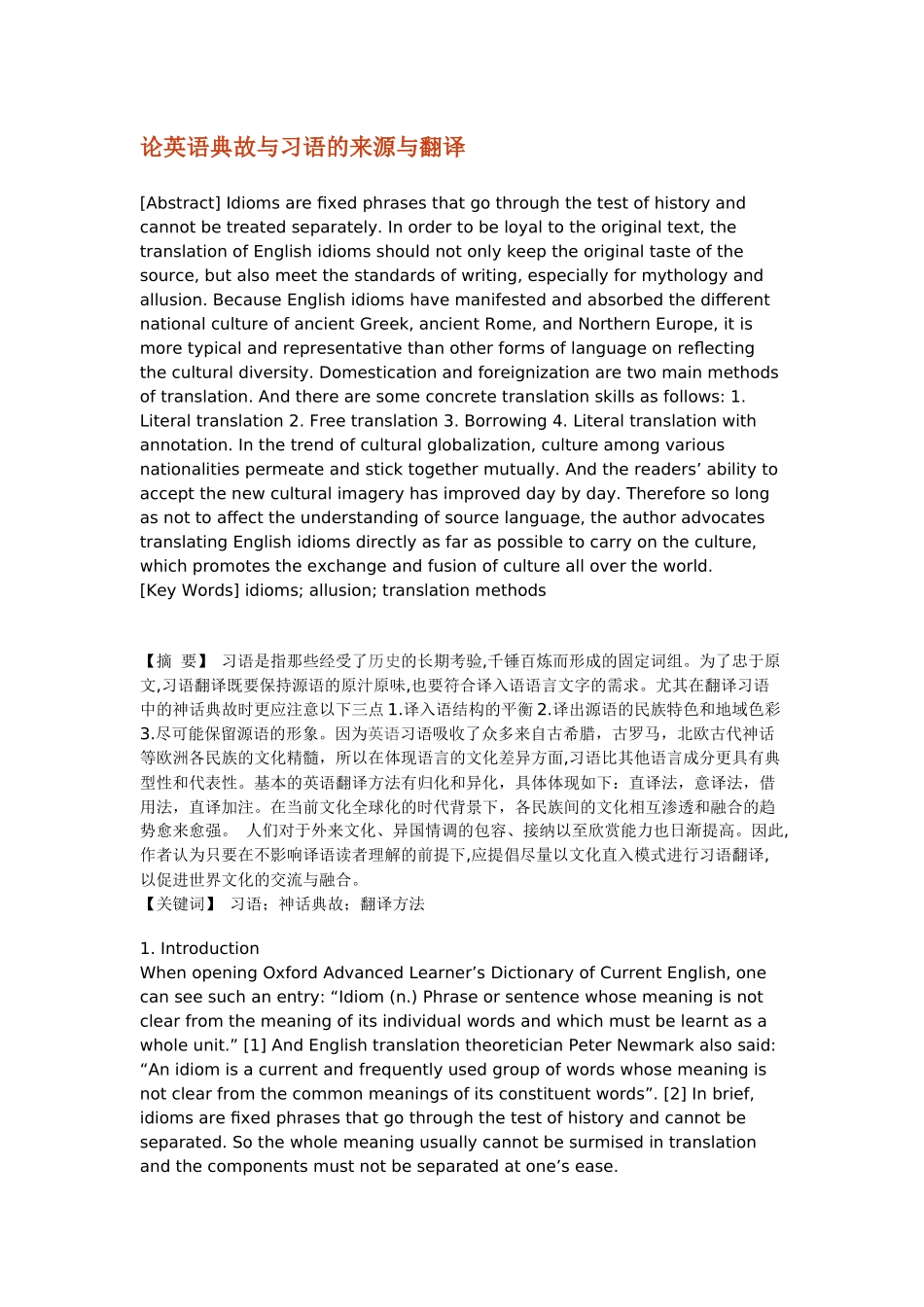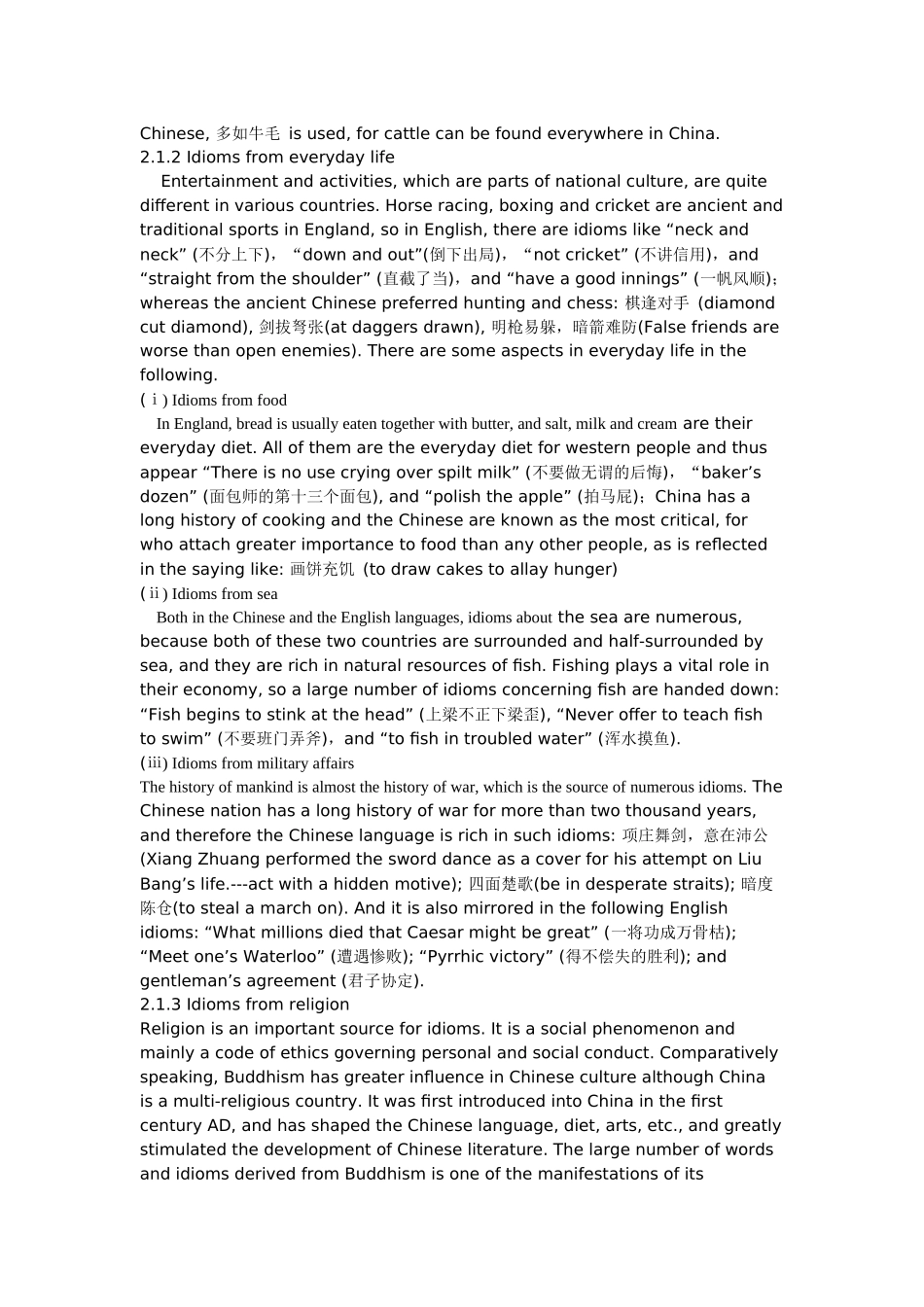论英语典故与习语的来源与翻译[Abstract] Idioms are fixed phrases that go through the test of history and cannot be treated separately. In order to be loyal to the original text, the translation of English idioms should not only keep the original taste of the source, but also meet the standards of writing, especially for mythology and allusion. Because English idioms have manifested and absorbed the different national culture of ancient Greek, ancient Rome, and Northern Europe, it is more typical and representative than other forms of language on reflecting the cultural diversity. Domestication and foreignization are two main methods of translation. And there are some concrete translation skills as follows: 1. Literal translation 2. Free translation 3. Borrowing 4. Literal translation with annotation. In the trend of cultural globalization, culture among various nationalities permeate and stick together mutually. And the readers’ ability to accept the new cultural imagery has improved day by day. Therefore so long as not to affect the understanding of source language, the author advocates translating English idioms directly as far as possible to carry on the culture, which promotes the exchange and fusion of culture all over the world.[Key Words] idioms; allusion; translation methods【摘 要】 习语是指那些经受了历史的长期考验,千锤百炼而形成的固定词组。为了忠于原文,习语翻译既要保持源语的原汁原味,也要符合译入语语言文字的需求。尤其在翻译习语中的神话典故时更应注意以下三点 1.译入语结构的平衡 2.译出源语的民族特色和地域色彩3.尽可能保留源语的形象。因为英语习语吸收了众多来自古希腊,古罗马,北欧古代神话等欧洲各民族的文化精髓,所以在体现语言的文化差异方面,习语比其他语言成分更具有典型性和代表性。基本的英语翻译方法有归化和异化,具体体现如下:直译法,意译法,借用法,直译加注。在当前文...












